In my most recent article, I examined the foundational evidence behind the supposed discovery of the tobacco mosaic “virus” (TMV). I highlighted Wendell Meredith Stanley’s 1935 crystallization of what he claimed was “pure” TMV, and I noted the division among researchers before his work over whether a “virus” was a biological entity or simply a toxic chemical. At that time, the debate was fundamental: was the invisible “virus” a particle capable of independent life, or merely a toxic chemical or enzyme-like substance? This distinction matters because it reflects how early foundational conclusions were based on inference rather than direct observation.
As one example, I referenced a 1931 study by Vinson and Petre, who described the TMV “virus” as behaving chemically. Since the paper itself is behind institutional paywalls, I quoted it as presented by virologist Ed Rybicki on his ViroBlogy site, and linked back to him for transparency.
The “Debate” with Ed Rybicki
That reference apparently struck a nerve. Within hours of publishing my piece on ViroLIEgy.com, I received a comment from Rybicki. Rather than addressing my arguments, he responded with insults—insisting that my questioning of virology’s foundations was invalid, while also claiming that Koch’s Postulates are “just that and not rules”—all the while leaning on appeals to modern authority, such as electron microscopes, RNA, DNA, and synthetic genomes—without engaging the logical problems I raised.
Rybicki's response (emphasis mine):
Given that you refer to me, I feel at liberty to comment on your entire piece of “work” that you have laid out here.
That is, that it is a complete and unmitigated crock of shit. The seemingly blind insistence that early workers with viruses did not isolate an “organism” or satisfy Koch’s Postulates – which were, by the way, just that and not rules – presumes that their observations were invalid and that, by extension, all modern virology is based on falsehoods.
Which, as a virologist of nearly fifty years standing, I can categorically state is a complete and utter crock of shit, as I stated previously.
Don’t you think science has advanced since Beijerinck, Mayer and Ivanovsky? Don’t you think that the invention of the electron microscope and discovery of both DNA AND RNA as genetic materials (the latter only for viruses and viroids) has shown us that, yes indeed, there ARE “sub-microscopic” pathogens that are acellular and which have to use cellular ribosomes to complete their life cycles – unlike any other form of life.
I have used the discovery of TMV – which text you apparently refer to (https://rybicki.blog/2012/02/07/a-short-history-of-the-discovery-of-viruses-part-2/) – and various other discoveries about TMV to tie together the scientific discoveries about viruses, over an 80+ year period. That is, the demonstration that an “acellular” fluid could cause plant disease, through to the precise localisation of every atom in the structure of TMV virions by X-ray crystallography. I have included this in a textbook that you should obviously read (https://www.sciencedirect.com/book/9780128227848/canns-principles-of-molecular-virology), in that it would illuminate some gaping voids in your knowledge and in your understanding.
Moreover, people working in my lab have, as others have done elsewhere, recreated infectious virus genomes by synthesis of DNA oligonucleotides and subsequent use of them to infect plants – and mammalian cells. Viruses are real, therefore, and any amount of hand-waving on your behalf will not alter that fact.
I responded politely the next day, pointing him back to the importance of Koch’s Postulates, which the NIH, CDC, and WHO themselves acknowledge as essential for proving microbial causation of disease. For easy reference, here are the quotes from these and other organizations along with virologists:
NIH: Koch's Postulates are the “rules for experimental proof of pathogenicity.”
CDC: “Koch’s postulates form the basis of proof that an emerging agent is the etiological cause of a disease” and “the interpretation should consider the successful fulfillment of each of Koch's postulates.”
WHO: “Conclusive identification of a causative must meet all criteria in the so-called ‘Koch’s postulate.’”
The College of Physicians of Philadelphia: “Scientists today follow these basic principles, which we now call Koch’s postulates, when trying to identify the cause of an infectious disease.”
The American Association of Immunologists (AAI): Koch's Postulates are “still used by scientists today when looking for causes of new diseases,” and are a “scientifically sound way of determining whether a disease was caused by an organism (such as a bacterium, virus, or other)”
Microbiology with Diseases by Taxonomy: “Koch’s postulates are the cornerstone of infectious disease etiology. To prove that a given infectious agent causes a given disease, a scientist must satisfy all four postulates.”
Lester S. King: Koch's Postulates are a chain of evidence that is so strong and convincing “that his principles have been exalted as ‘postulates’ and considered a model for all future work.”
Ron Fouchier: “You can isolate a virus from a patient, but that does not mean they died from it; to show that it causes disease you need to fulfill Koch’s postulates.”
Peter Duesberg: “Koch’s postulates are pure logic. Logic will never be ‘out of date’ in science.”
Ross and Woodyard: “Koch’s postulates are mentioned in nearly all beginning microbiology textbooks and they continue to be viewed as an important standard for establishing causal relationships in biomedicine.”
Zaki et al.: “It will be equally important to test whether HCoV-EMC fulfills Koch’s postulates as the causative agent of severe respiratory disease.”
Zhou et al.: “The association between 2019-nCoV and the disease has not been verified by animal experiments to fulfil the Koch’s postulates to establish a causative relationship between a microorganism and a disease.”
Zhu et al.: “Although our study does not fulfill Koch’s postulates, our analyses provide evidence implicating 2019-nCoV in the Wuhan outbreak.”
I invited Rybicki to cite specific objections to my article and discuss them civilly, without insults. He has not responded:
Hi Ed,
Koch’s Postulates are a logical framework that adheres to the scientific method. They are considered essential by the NIH, CDC, WHO, and many other sources, all detailed in this article.
https://viroliegy.com/2024/10/18/the-chain-of-causation/
If you have any other objections to the material and argument I presented in my TMV article, please cite specific examples from it, and we can address them in a civil fashion without insults.
However, Rybicki doubled down on the insults in another comment on a separate article, calling me a “long-winded and pseudoscientific crank” who ignores “hard evidence” for the existence and purification of “viruses,” while implying my education is lacking:
You are, quite simply, a long-winded and pseudoscientific crank. You lean heavily on definitions and concepts that were outmoded 50 years ago – and wilfully refuse to recognise hard evidence for the existence, purification and characterisation of viruses. This is obviously not your day job – or you’d be better educated.
Again, I asked him to refrain from ad hominem attacks and to provide specifics, to which I have not received a response:
Hi Ed,
Once again, I ask that you refrain from insults. If you want to discuss specific aspects of my argument or the evidence presented in my article, please cite specific examples and leave the ad hominem attacks out of it. Otherwise, you will be blocked.
Shortly thereafter, he took to his own blog to vent further. In a post titled Refutation of some rank nonsense, Rybicki described my work as “entirely horseshit” while declaring that anyone who disagreed would simply have their comments deleted:
I had the misfortune today to follow a link to my page on History of Discovery of Viruses, which is included in Cann’s Principles of Molecular Virology that I revised in 2023 for a 7th Edition. This landed me here, which I thought was a serious page on the history of Virology – but I was very wrong.
Very, very wrong.
Instead, it is a densely-written, pseudoscientific collection of incorrect assumptions, applications of hopelessly dated definitions, and bold statements of “fact” that are entirely horseshit. I have commented there, but I doubt my comment will survive. Instead, I reproduce it here for your delectation. Or amusement. Don’t bother to be outraged and accuse me of anything that proves to me that you are a virus denialist, because I shall simply delete it.
This is rather revealing. When challenged, virologists like Rybicki do not provide the promised “hard evidence.” Instead, they resort to insults, censorship, and appeals to authority. If the case for “viruses” is as solid as claimed, why not simply present the evidence?
Koch’s Postulates and Logical Standards
In his comments to me, Rybicki pointed to his revised seventh edition of Principles of Molecular Virology, suggesting that I needed to “educate myself” and stop relying on concepts such as Koch’s Postulates, which he claimed were “outmoded 50 years ago.” Perhaps he should reread the textbook.
Ironically, in the very first edition of this textbook published in 1993, Koch’s Postulates are described as the proof that an “infectious agent” is responsible for a specific disease:
Koch defined the four famous criteria now known as Koch's postulates which are still generally regarded as the proof that an infectious agent is responsible for a specific disease:
(1) The agent must be present in every case of the disease.
(2) The agent must be isolated from the host and the grown in vitro.
(3) The disease must be reproduced when a pure culture of the agent is inoculated into a healthy susceptible host.
(4) The same agent must be recovered once again from the experimentally infected host.
This definition remained consistent through the first six editions. Yet in Rybicki’s 2023 revision, the wording was altered. There, he now writes that they are the best proof for determining causation:
Koch defined four famous criteria which are now known as Koch’s postulates, which are still generally regarded as the best proof that an infectious agent—cellular or viral—is responsible for a specific disease.
He then states that these postulates are “still central” to the study of “infectious” diseases. This directly contradicts the notion that they were “outmoded 50 years ago.” Yet, in the very next breath, he admits they cannot be fulfilled for “viruses”—since “viruses” cannot be conveniently cultured. His workaround? To simply lower the bar:
These principles are still central to the study of infectious diseases, but in the case of viruses that only infect humans, and which cannot be conveniently cultured, it is regarded as being sufficient to simply show that natural transmission of an identified agent causes the disease (see Chapter 8).
So which is it? Are Koch’s Postulates the “best proof” for “viruses,” or are “viruses” exempt because they can’t satisfy them?
This is the crux of the problem: virology claims to uphold scientific standards while simultaneously excusing itself from meeting them. As Rybicki himself acknowledges, Koch's Postulates represent the best proof for establishing causation, and this is precisely because their logical framework aligns with the scientific method. They provide clear, falsifiable conditions and demand the presence of a valid independent variable (IV) free of confounders to experiment with. In practice, this requires that the presumed causative agent be identified and demonstrated to exist independently of everything else before any experimentation can begin.
Robert Koch emphasized this principle through the requirement of the pure culture—a culture containing only a single species of organism. Only then can researchers be certain which microbe, if any, is responsible for disease. In his 1881 paper Methods for the Study of Pathogenic Organisms, Koch stressed:
“As I have mentioned earlier, this problem can only be solved with the help of pure cultures, and I do not believe it is too much to say that the most important point in all studies on infectious diseases is the use of pure cultures.
Since the importance of pure cultures has been known for a long time, it has thus been true that all who have worked in this field of infectious disease have worked the hardest to perfect methods of pure culture.”
The inclusion of the pure culture requirement aligns with the principles of the scientific method: to establish causation, the microbe must be isolated from all potential confounding variables so that it can function as the independent variable (the presumed cause) in experiments. Obtaining a pure culture of bacteria is straightforward: a sample—blood, tissue, or other fluids—is collected under sterile conditions, examined microscopically (e.g., Gram stain), and streaked onto agar using selective media. Individual colonies are isolated and repeatedly cultured to ensure purity, allowing the bacterium to be studied and tested in isolation.
Rybicki knows that, in virology, meeting this requirement is impossible. “Viral” culturing never begins with an identified purified particle. Instead, virologists take unpurified patient material and add it to a cocktail of foreign cells, tissues, antibiotics, and fetal bovine serum. The toxic conditions often cause cell death, which is then reinterpreted as evidence of a “virus,” even though no independent variable was ever introduced.
Virologists openly admit they cannot obtain purified and isolated samples of the presumed “viral” particles directly from host material. As Siouxsie Wiles, an associate professor at the University of Auckland and microbiologist, stated in an AAP “Fact” check:
“Viruses are basically inanimate objects which need a culture to activate in. But the way they are phrasing the requests is that the sample must be completely unadulterated and not be grown in any culture – and you can’t do that. You can’t isolate a virus without using a cell culture, so by using their definition it hasn’t been isolated. But it has been isolated and cultivated using a cell culture multiple times all around the world.”
This statement reflects the core issue: while virologists may claim to isolate “viruses,” what they are actually doing is culturing them in a way that requires introducing cellular material, which violates the standard of isolation required for scientific proof.
Additionally, as noted by the CDC in a Freedom of Information (FOI) request obtained by Christine Massey:
“Viruses need cells to replicate, and cells require liquid food, so this specific component of the request is outside of what is possible in virology.”
This confirms that the purification and isolation of “viral” particles directly from host fluids is outside the current capabilities of virology, further undermining claims of genuine isolation.

To conceal this failure, virologists have quietly redefined the word isolation. In microbiology, isolation means separating a microbe from all other material so that it exists in pure form and can be directly characterized. In virology, however, “isolation” often means little more than exposing patient material to cell cultures and later applying indirect genetic or imaging techniques. No particle has ever been shown to exist in pure form independently of this artificial process. This semantic sleight of hand allows virologists to claim they have “isolated a virus” when in fact they have only produced a soup of cellular debris and assumed “viral” fragments. Such redefinitions bypass the very requirement Koch identified as foundational: proving the independent existence of the causative agent.
This leads to circular reasoning: virologists presuppose a “virus” exists and then interpret cell culture effects—such as cytopathic effects (CPE)—as proof of that assumption. This reasoning is logically unsound. It begs the question (assuming from the start that a “virus” exists and must replicate in culture), affirms the consequent (if CPE, then “virus”), and commits a false cause fallacy (ignoring that CPE can arise from many “non-viral” factors). Without direct isolation and identification before experimentation, there is no evidence that a “virus” exists in the host, and thus no valid independent variable to establish causation. What remains is assumption stacked upon assumption.
Thus, virologists begin with the assumption that a “virus” exists in the unpurified sample and then attempt to reveal it through indirect evidence: cell culture experiments, genomic sequences, and epidemiological correlations. But cytopathic effects in a culture can arise from the toxic conditions of the experiment itself. Genome assemblies rely on computational stitching of fragments without ever demonstrating that the sequences come from a single, independent entity. And epidemiological data, at best, shows patterns of illness, not a direct cause. Each of these methods assumes the very thing it is meant to prove—that a “virus” exists—without ever providing independent confirmation.
In other words, virology does not test an independent variable; it presupposes one. When cytopathic effects (CPE), genetic fragments, or epidemiological patterns are observed, they are automatically attributed to the assumed “virus,” even though that “virus” has never been directly shown to exist. By abandoning the independent variable, virology abandons the very logic that makes experimentation scientific.
This is not a trivial detail—it is the very foundation of experimental science and a fatal flaw for virology. Without a clearly defined independent variable, there is no way to establish cause and effect. If the supposed “virus” has never been purified and demonstrated to exist independently of the host and other cellular components prior to experimentation, then it cannot serve as an independent variable because it cannot be varied and manipulated during the experiment. Instead, what is being tested is a mixture of uncontrolled and confounding variables, making it impossible to determine what—if anything—is responsible for the observed outcome. Any experiment that proceeds without this step is inherently invalid, no matter how sophisticated the downstream techniques may appear.
This lack of an independent variable is why Rybicki attempts to waive away Koch’s Postulates, even though he admits they remain the gold standard for proving causation in experimental science. By conceding that the best direct evidence cannot be met for “viruses,” and then settling for weaker, indirect evidence deemed “sufficient,” he is effectively acknowledging that “pathogenic viruses” remain scientifically unproven. In place of direct proof, he argues it is “sufficient” to show that the “natural transmission” of an “identified” agent (which has never been properly purified, isolated, and identified) coincides with disease. But this merely substitutes correlation for causation. Epidemiological patterns and genomic data, at best, suggest associations; they cannot fulfill the logical rigor of the scientific method or the standard Koch himself insisted upon. By lowering the bar from the best proof to “sufficiency,” Rybicki exposes that virology’s retreat from Koch’s Postulates is not a sign of progress, but of abandoning science’s own standards. In acknowledging that Koch’s Postulates remain the “best proof,” he concedes, in effect, that virology has no proof at all.
What Genuine Scientific Evidence Would Look Like
So let me be clear: as Rybicki conceded that the best evidence does not exist, and yet he still hides behind the claim that “hard evidence” for the existence, purification and characterisation of “viruses” does exist, I publicly challenge Ed Rybicki—or any virologist—to lay out the definitive proof that “viruses” exist as distinct entities, have been truly isolated and purified, and cause disease by satisfying the scientific method and Koch’s Postulates.
At minimum, two straightforward questions must be answered:
Do you have verifiable evidence of particles—presumed to be “viruses”—that have been directly purified and isolated from the fluids of a sick human or animal, without the use of cell culturing, and then confirmed through electron microscopy?
Do you have evidence that these same purified and isolated particles have been proven “pathogenic” in a natural manner, through strict adherence to the scientific method and satisfaction of Koch's Postulates?
If they want to directly prove the hypothesis that an invisible microbe within a host is causing disease, the best scientific proof is absolutely necessary, which demands that it is demonstrated that:
The microbe actually exists directly in the fluids of sick hosts but not in the fluids of healthy hosts.
The specific microbe is purified, isolated, and identified via electron microscopy as a valid independent variable prior to experimentation (known as time order: the cause must exist before the effect).
The microbe is introduced into a healthy host in the manner proposed by the hypothesis (via aerosolization, ingestion, etc.) as the mode of “infection.”
The specific disease associated with the microbe is reproduced following this introduction.
The disease is transmissible from a sick host to a healthy host in the hypothesized manner (e.g., through close contact, coughing, sneezing, etc.).
After transmission, the same microbe can be purified and isolated from the fluids of the newly sickened host and confirmed.
This process must be repeated with a large sample size with proper control experiments, and the results must be independently reproduced by other researchers.
That is what genuine scientific evidence looks like. It does not rely on indirect measures such as cell cultures or genomic data. It does not beg the question, affirm the consequent, or commit a false cause fallacy. It does not rest on mere correlation. The presumed causative agent is demonstrated to exist before any experimentation and shown to cause disease in the manner hypothesized through careful observation. Every step is logical, testable, falsifiable, and fully aligned with the scientific method and Koch’s Postulates. If such “hard evidence” exists, let it be presented. If it does not, no amount of insults, appeals to authority, or modern techniques can obscure the fact that virology rests on unproven assumptions—and without that evidence, virology is not science at all, but, by definition, pseudoscience.




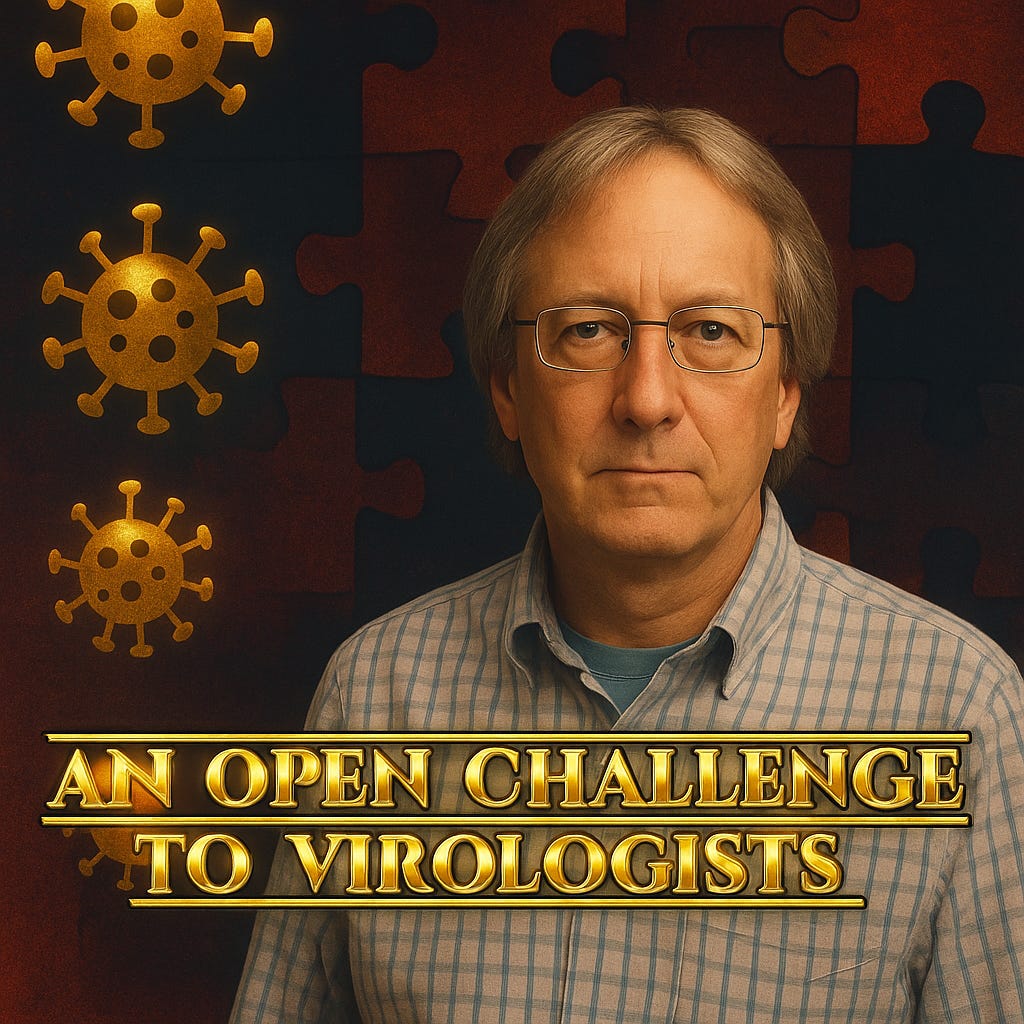
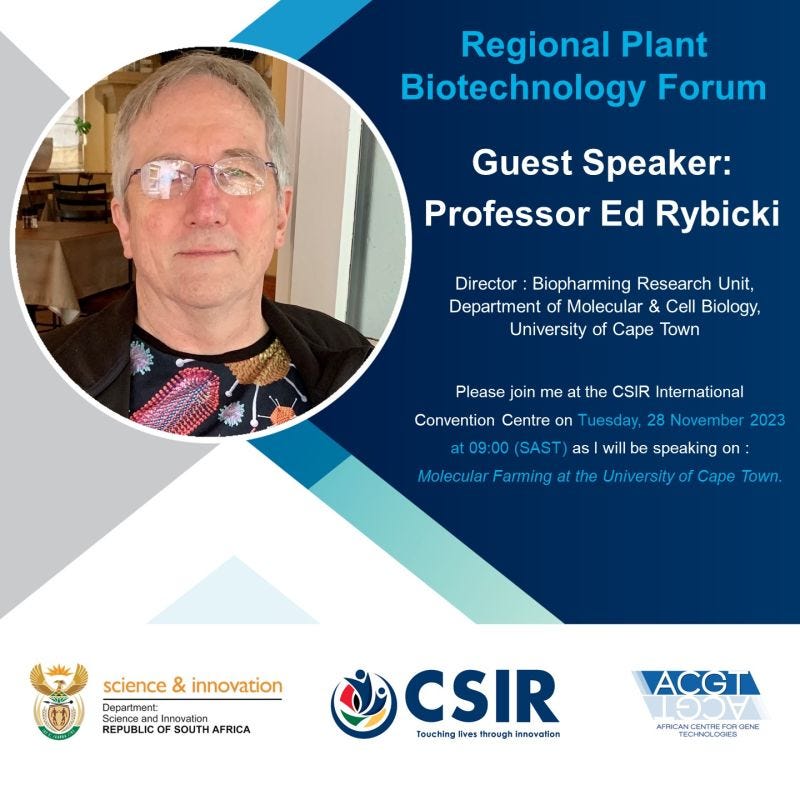

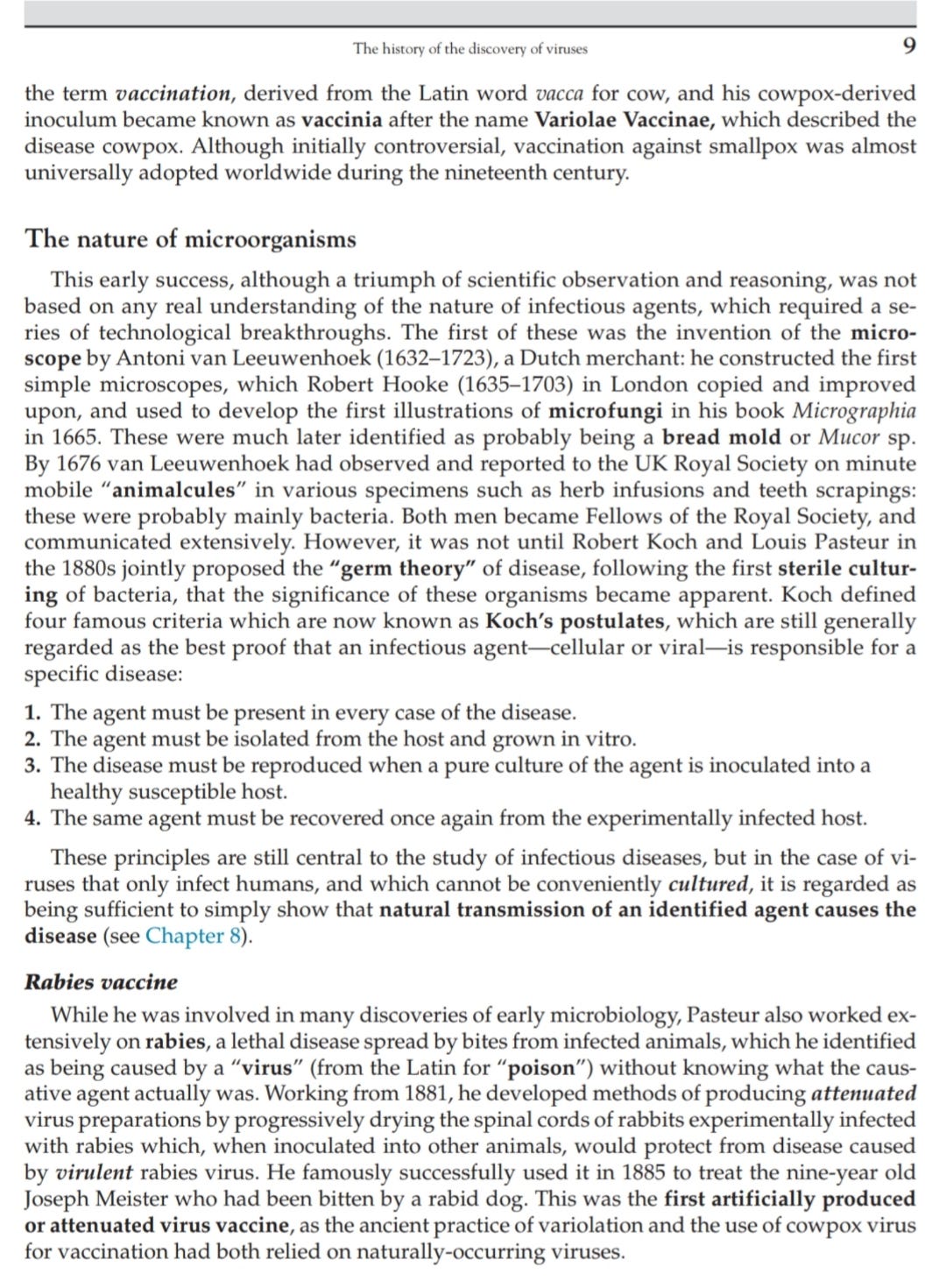
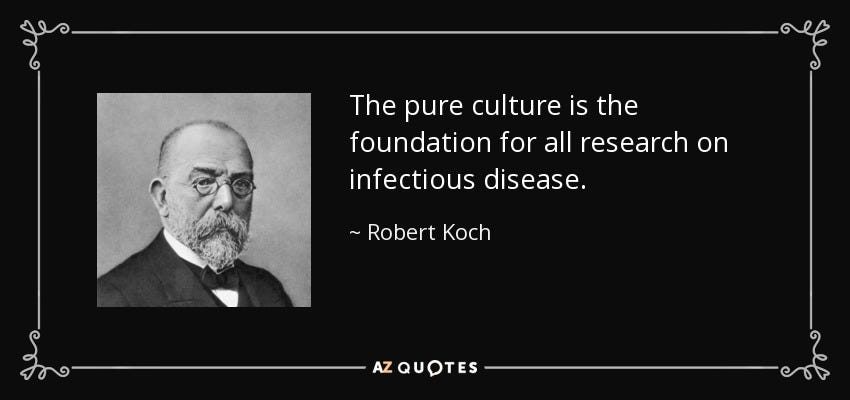
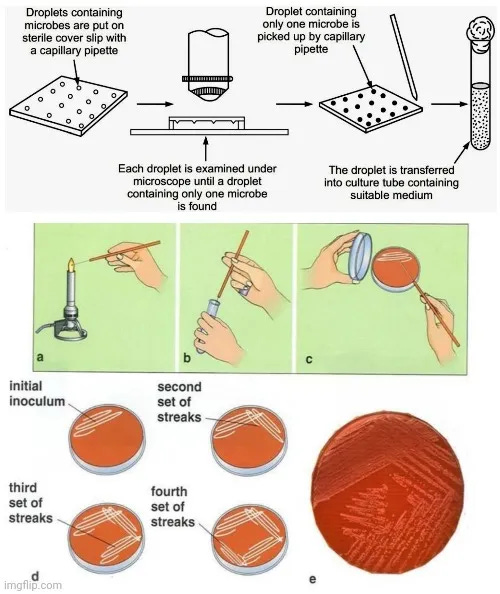

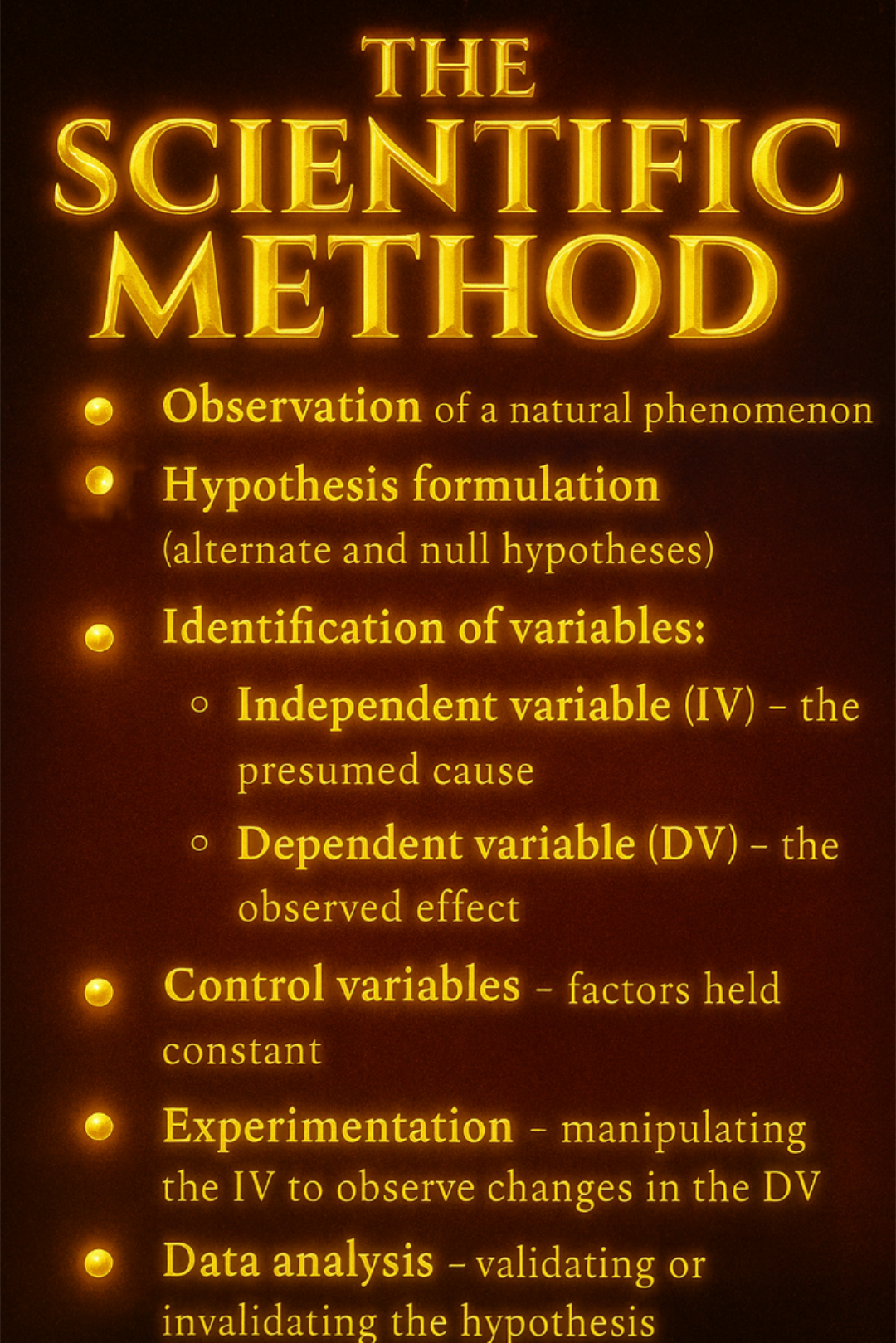
As an old, worn-out retired pharmacist, I had much to say about Covid in pre-Substack days. I said it was an epidemic of testing, and not of any pathogen. I said the virus had not, and could not, be isolated or meet Koch’s postulates. Nevertheless, I thought there was a pathogen. And certainly, I accepted that viruses exist. I could not make the leap, as Mike Yeadon did, to “viruses don’t exist.” Now that I have seen this response from Rybicki, whose work is familiar to me and whom I (used to) respect, it is apparent that such indeed may be the case. The cognitive dissonance is clanging loudly in my mind, believe me. The debate will be long and lively, I hope, but so far it looks like Virology has brought a knife to a gunfight.
Amazing. Love it. Hopefully this fellow will actually engage in a substantive discussion instead of hiding behind his pseudo-scientific credentials. I actually wrote to the Chairperson of the American Virology Society a while back trying to see if they would co-host a discussion on these topics. She thought it was an interesting idea and said she would check with the Board and then she ghosted me. I have yet to find a single virologist with the intelligence and courage to actually engage in a civilized discussion about their own field of study!